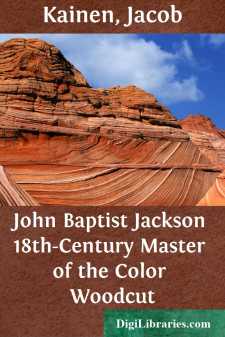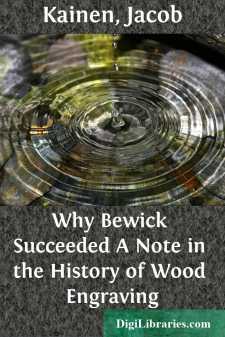Categories
- Antiques & Collectibles 13
- Architecture 36
- Art 48
- Bibles 22
- Biography & Autobiography 813
- Body, Mind & Spirit 142
- Business & Economics 28
- Children's Books 14
- Children's Fiction 11
- Computers 4
- Cooking 94
- Crafts & Hobbies 4
- Drama 346
- Education 46
- Family & Relationships 57
- Fiction 11829
- Games 19
- Gardening 17
- Health & Fitness 34
- History 1377
- House & Home 1
- Humor 147
- Juvenile Fiction 1873
- Juvenile Nonfiction 202
- Language Arts & Disciplines 88
- Law 16
- Literary Collections 686
- Literary Criticism 179
- Mathematics 13
- Medical 41
- Music 40
- Nature 179
- Non-Classifiable 1768
- Performing Arts 7
- Periodicals 1453
- Philosophy 64
- Photography 2
- Poetry 896
- Political Science 203
- Psychology 42
- Reference 154
- Religion 513
- Science 126
- Self-Help 84
- Social Science 81
- Sports & Recreation 34
- Study Aids 3
- Technology & Engineering 59
- Transportation 23
- Travel 463
- True Crime 29
John Baptist Jackson 18th-Century Master of the Color Woodcut
by: Jacob Kainen
Categories:
Description:
Excerpt
PREFACE
John Baptist Jackson has received little recognition as an artist. This is not surprising if we remember that originality in a woodcutter was not considered a virtue until quite recently. We can now see that he was more important than earlier critics had realized. He was the most adventurous and ambitious of earlier woodcutters and a trailblazer in turning his art resolutely in the direction of polychrome.
To 19th century writers on art, from whom we have inherited the bulk of standard catalogs, lexicons, and histories—along with their judgments—Jackson’s work seemed less a break with tradition than a corruption of it. His chiaroscuro woodcuts (prints from a succession of woodblocks composing a single subject in monochrome light and shade) were invariably compared with those of the 16th century Italians and were usually found wanting. The exasperated tone of many critics may have been the result of an uneasy feeling that he was being judged by the wrong standards. The purpose of this monograph, aside from providing the first full-length study of Jackson and his prints, is to examine these standards. The traditions of the woodcut and the color print will therefore receive more attention than might be expected, but I feel that such treatment is essential if we are to appreciate Jackson’s contribution, in which technical innovation is a major element.
Short accounts of Jackson have appeared in almost all standard dictionaries of painters and engravers and in numerous historical surveys, but these have been based upon meager evidence. A fraction of his work was usually known and details of his life were, and still are, sparse. Later writers interpreting the comments of their predecessors have repeated as fact much that was conjecture. The picture of Jackson that has come down to us, therefore, is unclear and fragmentary.
If he does not emerge from this study completely accounted for from birth to death, it has not been because of lack of effort. Biographical data for his early and late life—about fifty years in all—are almost entirely missing despite years of diligent search. As a man he remains a shadowy figure. I have traced Jackson’s life as far as the available evidence will permit, quoting from the writings of the artist and his contemporaries at some length to convey an essential flavor, but I have refrained from filling in gaps by straining at conjecture.
While details of his life are vague, sufficient information is at hand to reconstruct his personality clearly enough. After all, Jackson wrote a book and was quoted at length in another. A contemporary fellow-practitioner wrote about him with considerable feeling. These and other sources give a good indication of the artist’s character.
The man we have to deal with had something excessive about him; he was headstrong, tactless, impractical, enormously energetic, a prodigious worker, a conceiver of grandiose projects, and a relentless hunter of patrons. He was at home with his social superiors and had some pretentions to literary culture, he had a coarse gift for the vivid phrase in writing, and his tastes in art ran to the classic and heroic....



